Forensic Architecture
Forensic Architecture
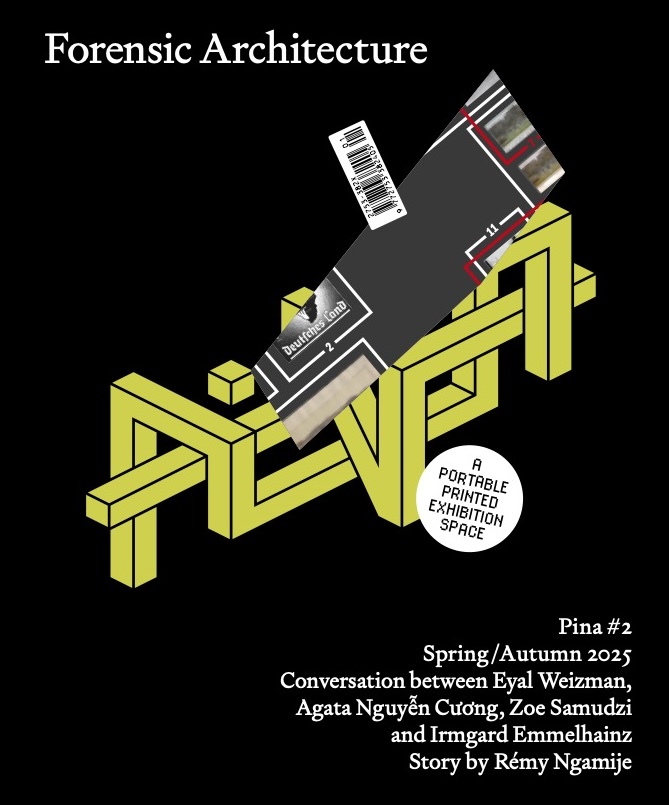
Pina #2
Forensic Architecture, Edgar Calel
Exhibitions by Edgar Calel and Forensic Architecture, conversations with Lisette Lagnado and between Eyal Weizman, Agata Nguyen Chuong, Zoé Samudzi and Irmgard Emmelhainz, and short stories by Portia Subran and Rémy Ngamije.
Forensic Architecture presents ‘A Counter-Archive of the Ovaherero and Nama Genocide’, a powerful investigation into the early 20th-century genocide committed by German colonial powers in today’s Namibia. Drawing on years of archival research and spatial analysis, the exhibition traces the lasting impact of colonial violence in three parts: from the ideological roots of racialised imperialism, to the design of the concentration camp, to the ongoing environmental degradation and dispossession affecting Indigenous communities today.
Edgar Calel’s ‘Dreams and memories dazzle through the flickering of fireflies’ is an exploration of dreams, memory and everyday life within his multi-generational family home in Comalapa, Guatemala. Each morning, dreams are shared among family members, as a practical and poetical way to sense the energy of the day ahead. Concrete business plans and reminders to cook certain dishes emerge from these retellings: a ritual so entwined in the architecture of their every day, that, even when apart, they recount their visions through shared voice notes.
Pina is a printed, portable exhibition space. We function as a commissioning platform, collaborating with artists to create exhibitions existing solely within the pages of a magazine.
And more
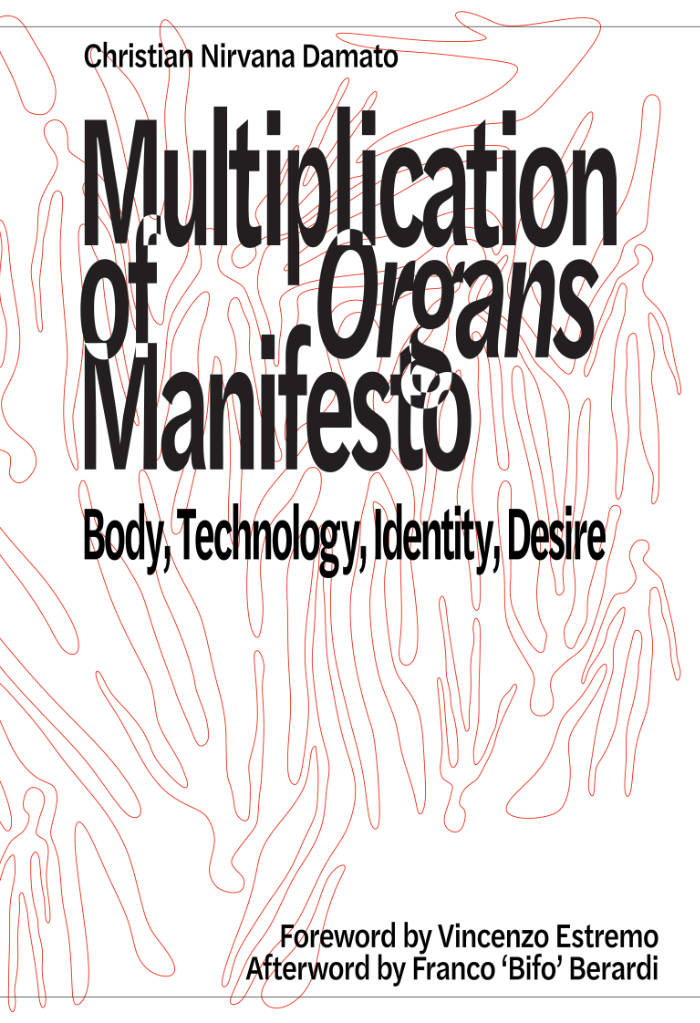
Multiplication of Organs (Manifesto) – Body, Technology, Identity, Desire
A queering of psychoanalysis put together by the forerunner of Inactual Magazine.
Organ Multiplication Manifesto is an essay that delves into the transformations of sociality and sexuality in the context of digital technologies. Using an interdisciplinary approach that blends philosophy, erotic literature, media theory, psychoanalysis, gender studies, and neuroscience, the text explores how devices, platforms, and technologies shape and produce normative systems that influence our perceptions, desires, and relationships with others. By examining the interplay between desire and digital mediation and drawing comparisons with authors such as Deleuze, Ballard, Žižek, Butler, Preciado, Bataille, and others, this book aims to present a new theoretical, critical, and philosophical perspective in the contemporary discourse on the relationship between humans, technology, and society.
This book begins with an analysis of three iconic erotic texts from Masoch, Ballard and Bataille, and uses this analysis as the departure point for its main theoretical work on the four topics listed in the subtitle. The book passes through a lot of interesting phases, including an analysis of Phenomenology and Gucci, class struggle and OnlyFans and much more, until eventually arriving at the actual manifesto for Organ Multiplication and the beautifully named notion of the "Caged Sun".
Foreword by Vincenzo Estremo.
Afterword by Franco "Bifo" Berardi.
"One may think that the history of the human culture is going to be enormously impoverished by the disappearance of the body, one may think that, on the contrary, human culture has been enriched by the renounce to presence and physical contact. It is not the intention of Damato to save this dilemma, His intention is rather to open a new field of investigation, and possibly to start a reflection on a more advanced dilemma: will the change of perception make possible the emergence of a new ontology, or is the disappearance of the body going to mark the final dissolution of human life itself?" — Franco "Bifo" Berardi
Christian Nirvana Damato is a writer, curator, and independent researcher working in the fields of philosophy, technology, psychoanalysis, and visual culture. He teaches media theory at the IED in Turin and runs various workshops on publishing and writing. He writes for and collaborates with various magazines and publishing houses. He is the founder and editorial director of Inactual. He has also published Medial Disorders. Interpretive and Non-statistical Compendium of Technological Disorders. Vol I, with contributions by Geert Lovink, Alfie Bown, Isabel Millar, Eyal Weizman (Forensic Architecture) et al. (ed. by, Inactual, 2024), Wearable Statistical Desires. Re-programming the performativity of the body through digisexuality (Mimesis 2025; Everyday Analysis, 2025) and Medial Disorders Vol II.
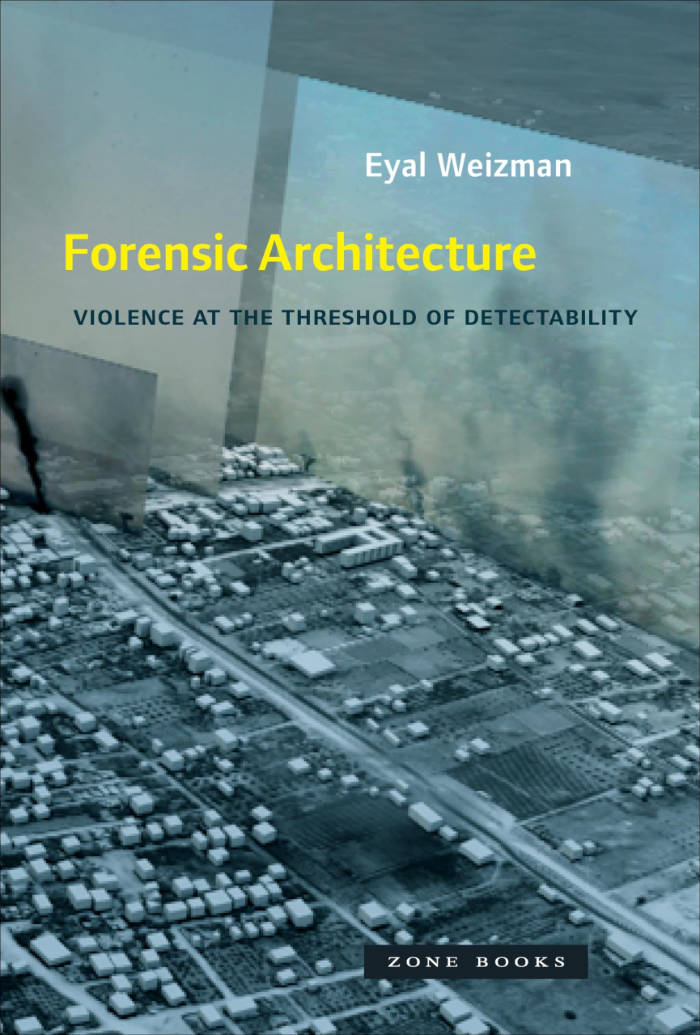
Forensic Architecture: Violence at the Threshold of Detectability
In Forensic Architecture, Eyal Weizman, the group’s founder, provides, for the first time, an in-depth introduction to the history, practice, assumptions, potentials, and double binds of this practice. The book includes an extensive array of images, maps, and detailed documentation that records the intricate work the group has performed.
Included in this volume are case studies that traverse multiple scales and durations, ranging from the analysis of the shrapnel fragments in a room struck by drones in Pakistan, the reconstruction of a contested shooting in the West Bank, the architectural recreation of a secret Syrian detention center from the memory of its survivors, a blow-by-blow account of a day-long battle in Gaza, and an investigation of environmental violence and climate change in the Guatemalan highlands and elsewhere.
Weizman’s Forensic Architecture, stunning and shocking in its critical narrative, powerful images, and daring investigations, presents a new form of public truth, technologically, architecturally, and aesthetically produced. Their practice calls for a transformative politics in which architecture as a field of knowledge and a mode of interpretation exposes and confronts ever-new forms of state violence and secrecy.

Spike #81/82 – The Post-Cool
Spike is turning twenty with a special double issue. Featuring: Rita Vitorelli on 20 Years of Spike; Post-Cool Berlin; Whitney Mallett, What Happened to New York?; Love-Hate Vienna, with musician Bibiza, curator Frederike Sperling, gallerist Dawid Radziszewski, and theatre director Milo Rau; Rose Wylie, Forensic Architecture, Amalia Ulman, Martin Herbert, Brian Dillon, Jeppe Ugelvig, Alex Mackin Dolan, Benjamin Hirte, Martti Kalliala, Adina Glickstein, Ivo Dimchev, Maria Hassabi, Florian Malzacher, Jason Dodge, Travis Diehl, Tea Hačić-Vlahović; Best-of-Spike reprints by Chris Kraus, Bruce Hainley, Ella Plevin, Sean Monahan, Gavin Brown & Daniel Baumann; poster: "A Radically Condensed History of Life Under the Sign of Spike: 2004–24"...
What does it mean to do culture Post-Cool? Launching the same year as The Facebook (now an AI auto-spam singularity), Berghain (subject to boycott), and the first EP by Kanye West (need we say more?), how do we retrain the spotlight on art that deals productively with the world?
Spike is celebrating 20 years of bringing this same generosity to art with a special double issue. Cultural protagonists in Berlin, Vienna, and New York piece together momentous changes in Spike's home cities, while founding publisher Rita Vitorelli narrates running the mag as an artist to Dean Kissick, underscored by reprints of seminal essays by the likes of Chris Kraus and Bruce Hainley. Further highlights are Taylor Swift as a millennial paracetamol; Silicon Valley optimizing the body for forever; video games as escapeways back into reality; and white-cube presentations of handicrafts, slot machines, and the choreographic turn.
Plus! A poster timeline of art's defining moments since 2004
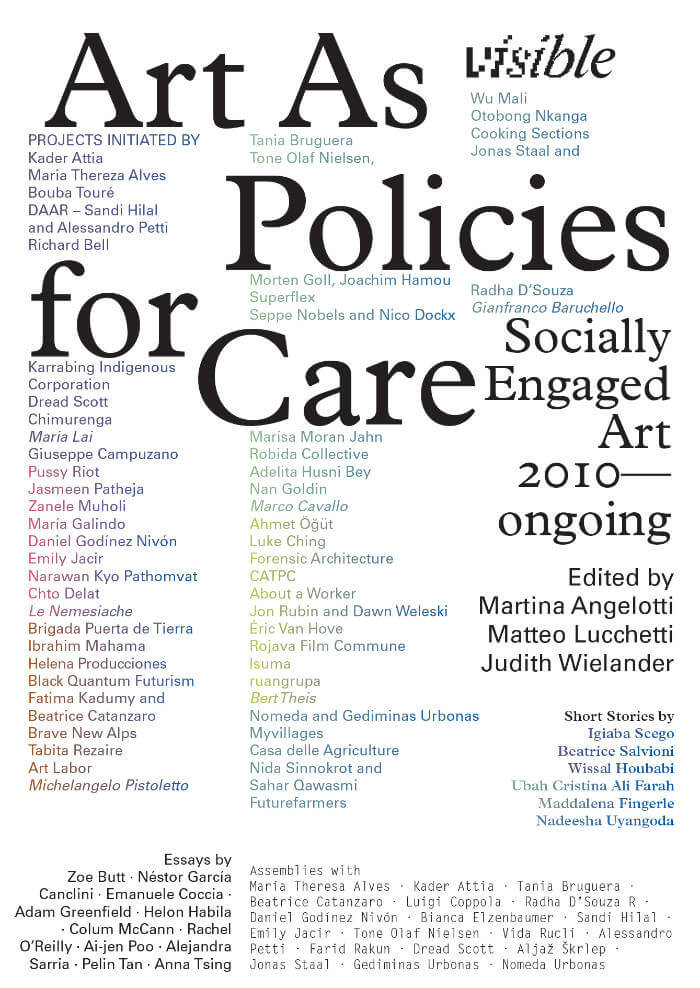
Visible – Art as Policies for Care – Socially Engaged Art (2010-Ongoing)
Judith Wielander, Matteo Lucchetti and 1 more
Comprehensive documentation on 43 outstanding socially committed artistic projects over the past twenty years.
The book Visible: Art as Policies for Care. Socially Engaged Art (2010–Ongoing) was born from the editors' enduring curatorial research into long-term situated art projects that exist within the social sphere, beyond the logic of the traditional art system, confronting unjust systems, and prefiguring novel visions for living together.
The socially engaged art projects collected here hold a significant place in the constantly evolving trans-local art scene of the past two decades, and form a lens through which to observe changing realities and their urgencies; they redefine the concept of art in light of current climatic, political, and social changes and foster the dematerialization of the artwork in processes that become policies of culture and care.
The publication is composed of four main sections with overarching photo documentation—interviews, essays, forums, and short literary texts—collecting contributions by artists, anthropologists, novelists, activists, and sociologists, such as Anna Tsing, Wissal Houbabi, Maria Thereza Alves, Tania Bruguera, Jonas Staal, DAAR - Decolonizing Architecture Art Research, Giuseppe Campuzano and Nan Goldin.
Edited by Martina Angelotti, Matteo Lucchetti, Judith Wielander.
Contributions by Ubah Cristina Ali Farah, Maria Thereza Alves, Martina Angelotti, Art Labor, Kader Attia, Gianfranco Baruchello, Richard Bell, Black Quantum Futurism, Brave New Alps, Tania Bruguera, Zoe Butt, Giuseppe Campuzano & Miguel López, Beatrice Catanzaro & Fatima Kadumy, CATPC, Marco Cavallo, Chimurenga, Luke Ching, Chto Delat, Emanuele Coccia, Cooking Sections, Luigi Coppola, Radha D'Souza & Jonas Staal, DAAR / Sandi Hilal & Alessandro Petti, Nico Dockx & Seppe Nobels, Maddalena Fingerle, Forensic Architecture, Futurefarmers, María Galindo, Néstor García Canclini, Daniel Godínez Nivón, Morten Goll, Adam Greenfield, Raphaël Grisey & Bouba Touré, Helon Habila, Helena Producciones, Sandi Hilal, Kim Hou, Wissal Houbabi, Adelita Husni Bey, Emily Jacir, Karrabing Film Collective, Selom Kudjie & Ibrahim Mahama, Zacharias Kunuk, Maria Lai, Le Nemesiache, Carolina Lio, Matteo Lucchetti, Wu Mali, Colum McCann, Marisa Morán Jahn, Zanele Muholi, Myvillages, Paolo Naldini, Jesús "Bubú" Negrón, Tone Olaf Nielsen, Otobong Nkanga, Rachel O'Reilly, Ahmet Öğüt, P.A.I.N., Jasmeen Patheja, Narawan Kyo Pathomvat, Michelangelo Pistoletto, Ai-jen Poo, Pussy Riot (Nadya Tolokonnikova), Sahar Qawasmi & Nida Sinnokrot, Tabita Rezaire, Robida, Rojava Film Commune, ruangrupa (Farid Rakun), Jon Rubin & Dawn Weleski, Beatrice Salvioni, Alejandra Sarria, Igiaba Scego, Dread Scott, Superflex, Pelin Tan, Bert Theis, Anna Tsing, Nomeda & Gediminas Urbonas, Nadeesha Uyangoda, Éric Van Hove, Judith Wielander, Andrea Zegna, Anna Zegna.
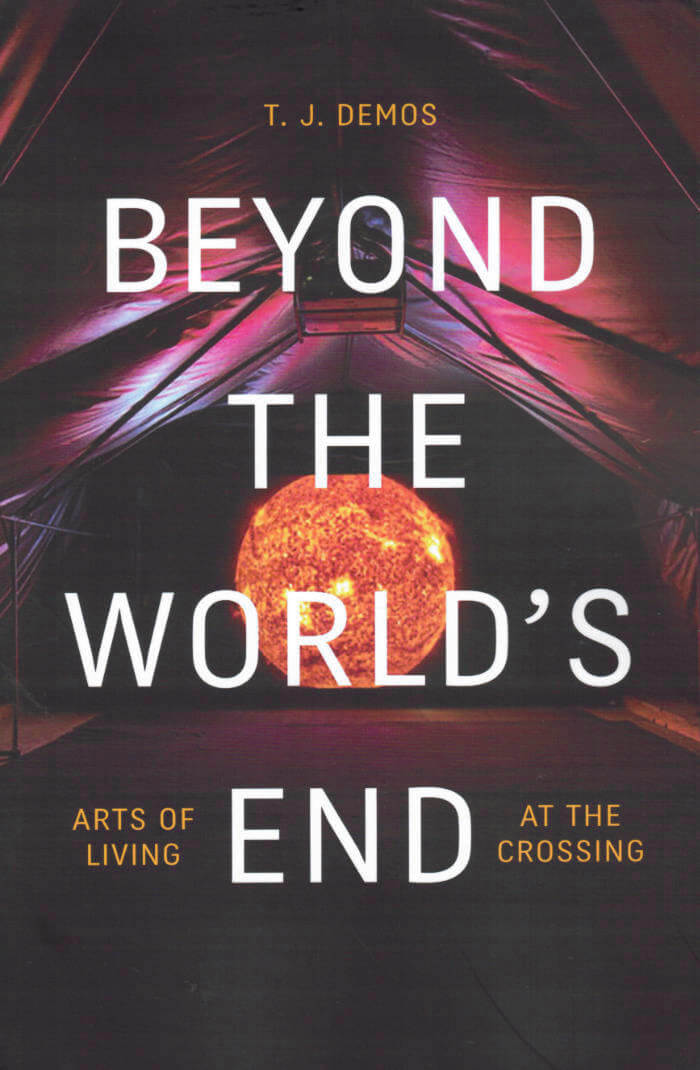
Beyond the World's End
In Beyond the World's End T. J. Demos explores cultural practices that provide radical propositions for living in a world beset by environmental and political crises.
Rethinking relationships between aesthetics and an expanded political ecology that foregrounds just futurity, Demos examines how contemporary artists are diversely addressing urgent themes, including John Akomfrah's cinematic entanglements of racial capitalism with current environmental threats, the visual politics of climate refugees in work by Forensic Architecture and Teddy Cruz and Fonna Forman, and moving images of Afrofuturist climate justice in projects by Arthur Jafa and Martine Syms.
Demos considers video and mixed-media art that responds to resource extraction in works by Angela Melitopoulos, Allora & Calzadilla, and Ursula Biemann, as well as the multispecies ecologies of Terike Haapoja and Public Studio. Throughout Demos contends that contemporary intersections of aesthetics and politics, as exemplified in the Standing Rock #NoDAPL campaign and the Zad's autonomous zone in France, are creating the imaginaries that will be crucial to building a socially just and flourishing future.
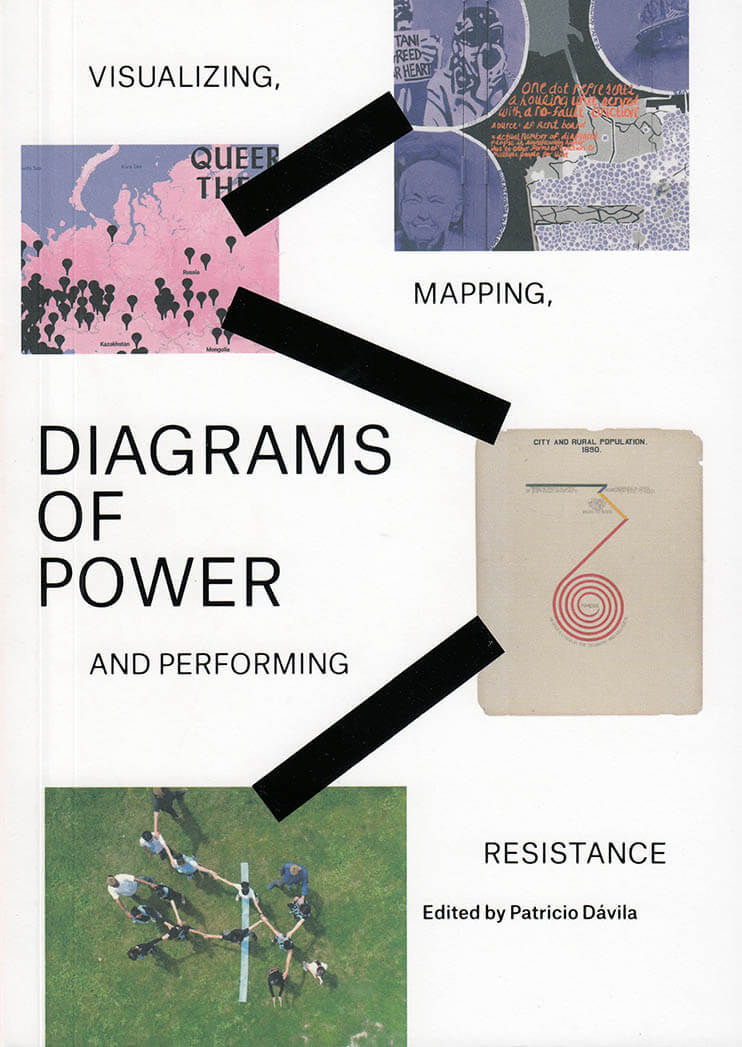
Diagrams of Power
Diagrams of Power: Visualizing, Mapping, and Performing Resistance, brings together the work of designers, artists, cartographers, geographers, researchers and activists who create diagrams to tell inconvenient stories that upset and resist the status quo.
Edited by Patricio Dávila. Words and works by Joshua Akers, Burak Arikan, Josh Begley, Joseph Beuys, Alexis Bhagat, Vincent Brown, Bureau d’Études, Teddy Cruz, Department of Unusual Certainties, Peter Hall, Alex Hill, W.E.B. DuBois, Patricio Dávila, Catherine D’Ignazio, Forensic Architecture, Fonna Forman, Terra Graziani, Iconoclasistas, Lucas LaRochelle, Eliana MacDonald, Julie Mehretu, Lize Mogel, Ogimaa Mikana, Margaret Pearce, Laura Poitras, Philippe Rekacewicz, Sheila Sampath, and Visualizing Impact.